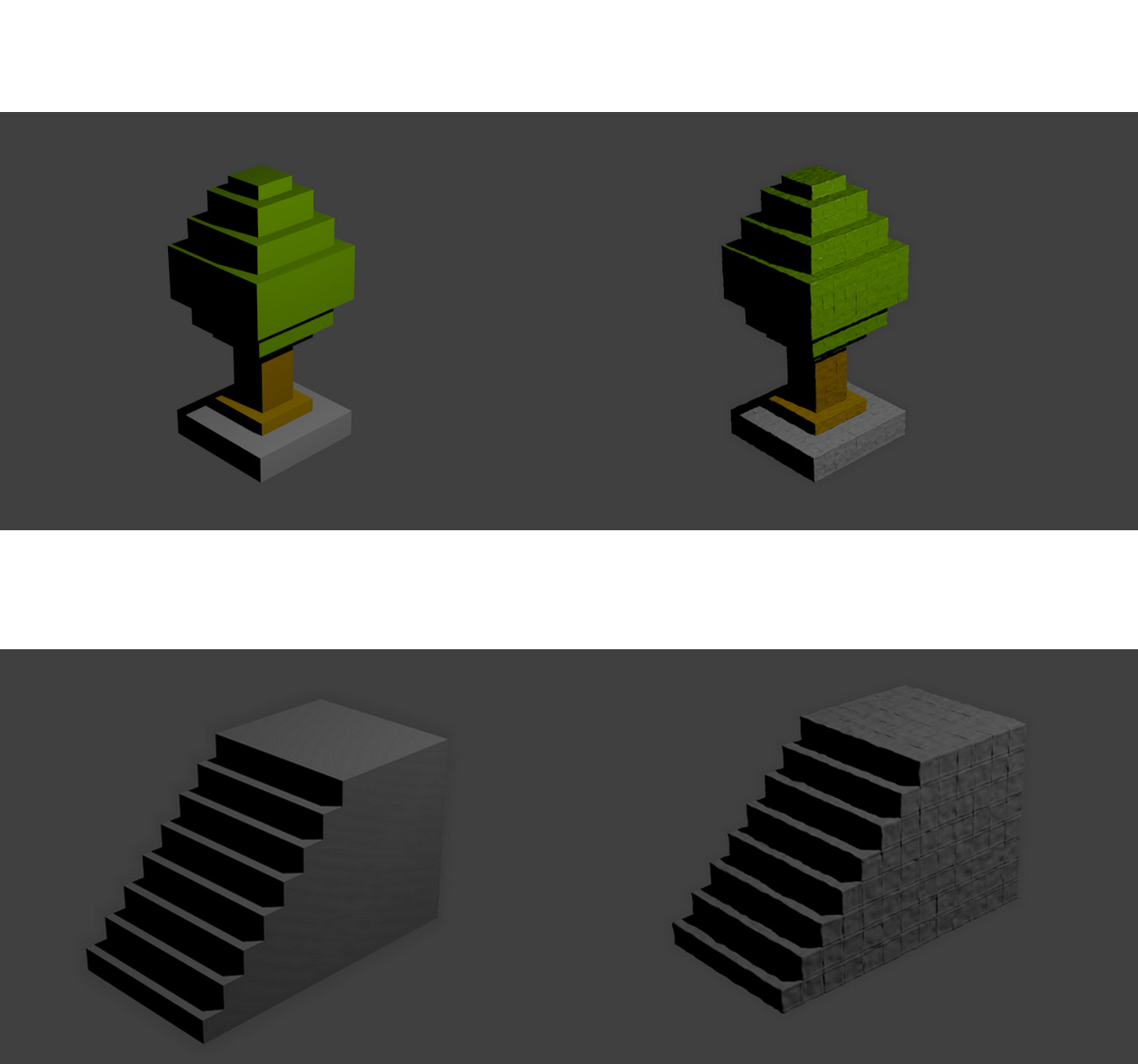

I'd be interested to know if you, dear reader, have an idea on how to do all this efficiently. Of course, this would involve cutting up the 2d image (and the corresponding depth map) in Photoshop or Gimp but I think this could be a good solution. Another approach would be to load one depth map per object, that way, at least, you don't get the elongated faces that connect the objects. I guess one could delete those faces and fix up the mesh so that you don't get holes when you move around with the camera, but that's quite a bit of work. These areas correspond to those elongated faces that bridge the gap between objects at different depths. Note that even if the depth map is perfect, you still have to come up with a plan for the areas that become visible when the camera moves around. Of course, that mesh is fully editable and the 3d scene can be adjusted rather easily (I think) if the depth map was not super accurate to begin with. What's cool is that after you have applied the "Displace" modifier, the mesh that started as planar has now moved according to the depth map.

I think that you can skip the creation of a new material and texture, go into "UV Editing", and just replace the depth map with the 2d image. Make sure the "Texture Coordinates" is set to "UV".Ĥ) Create a new material and texture (use the 2d image as the texture).Ħ) Switch to "UV Editing" screen (go into "Edit Mode") and use the 2d image for the mapping (instead of the depth map).ħ) Apply the "Displace" modifier so that the mesh is actually modified according to the depth map. The more you subdivide, the better the scene is gonna be but obviously, the slower things will become.ģ) Create a "Displace" modifier using the texture from the depth map. Remember that the darker the grayscale value is, the further away the pixel is.ġ) Load the depth map using "import images as planes".Ģ) Subdivide the mesh (in edit mode). A Blender expert I am not, so if there's a better way to do this, let me know! The black areas in the depth map correspond to pixels for which the depth is not known. The video below shows how to load a 2d image and a depth map to render a 3d scene in Blender using the "Displace" modifier.


 0 kommentar(er)
0 kommentar(er)
